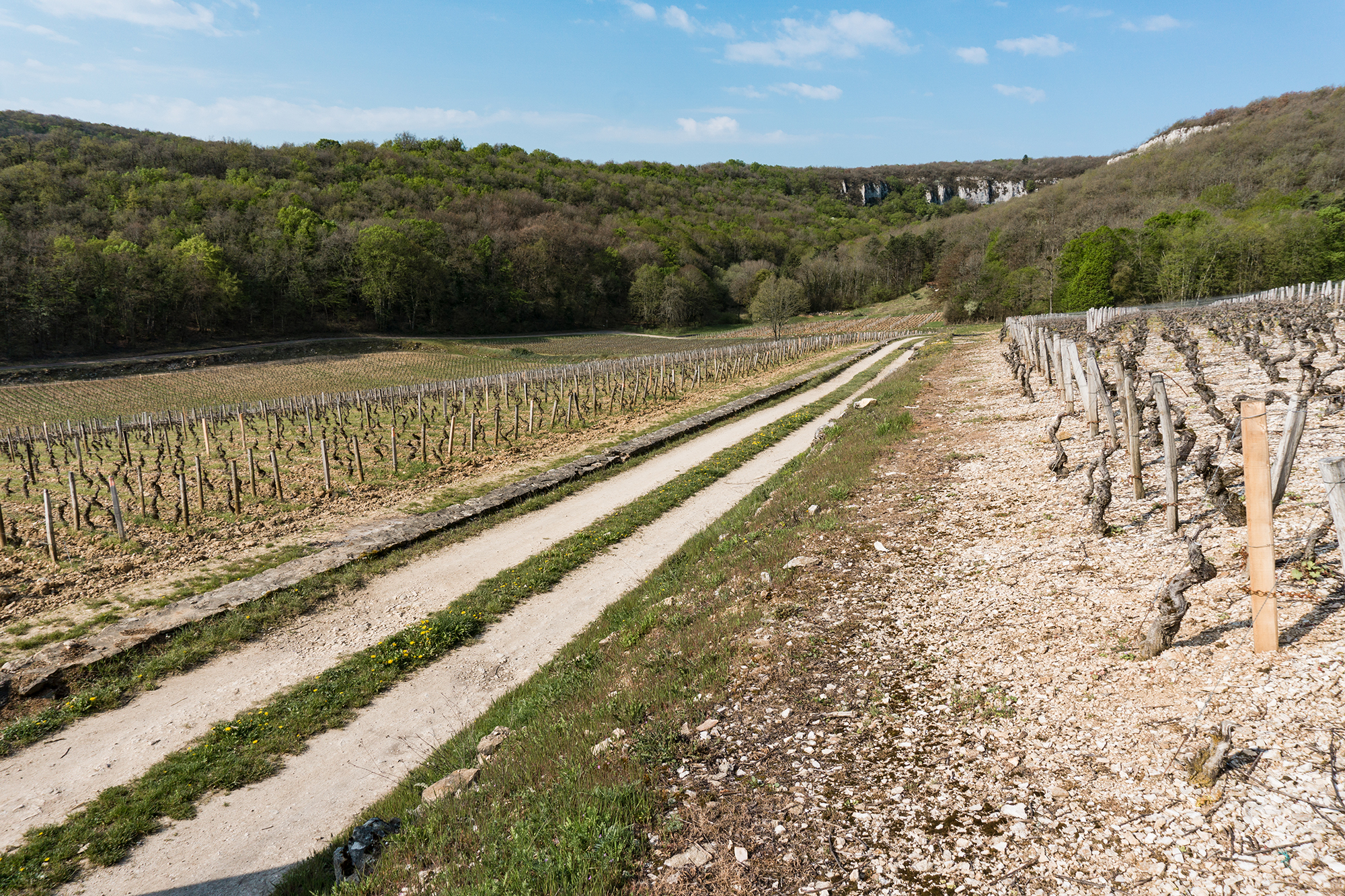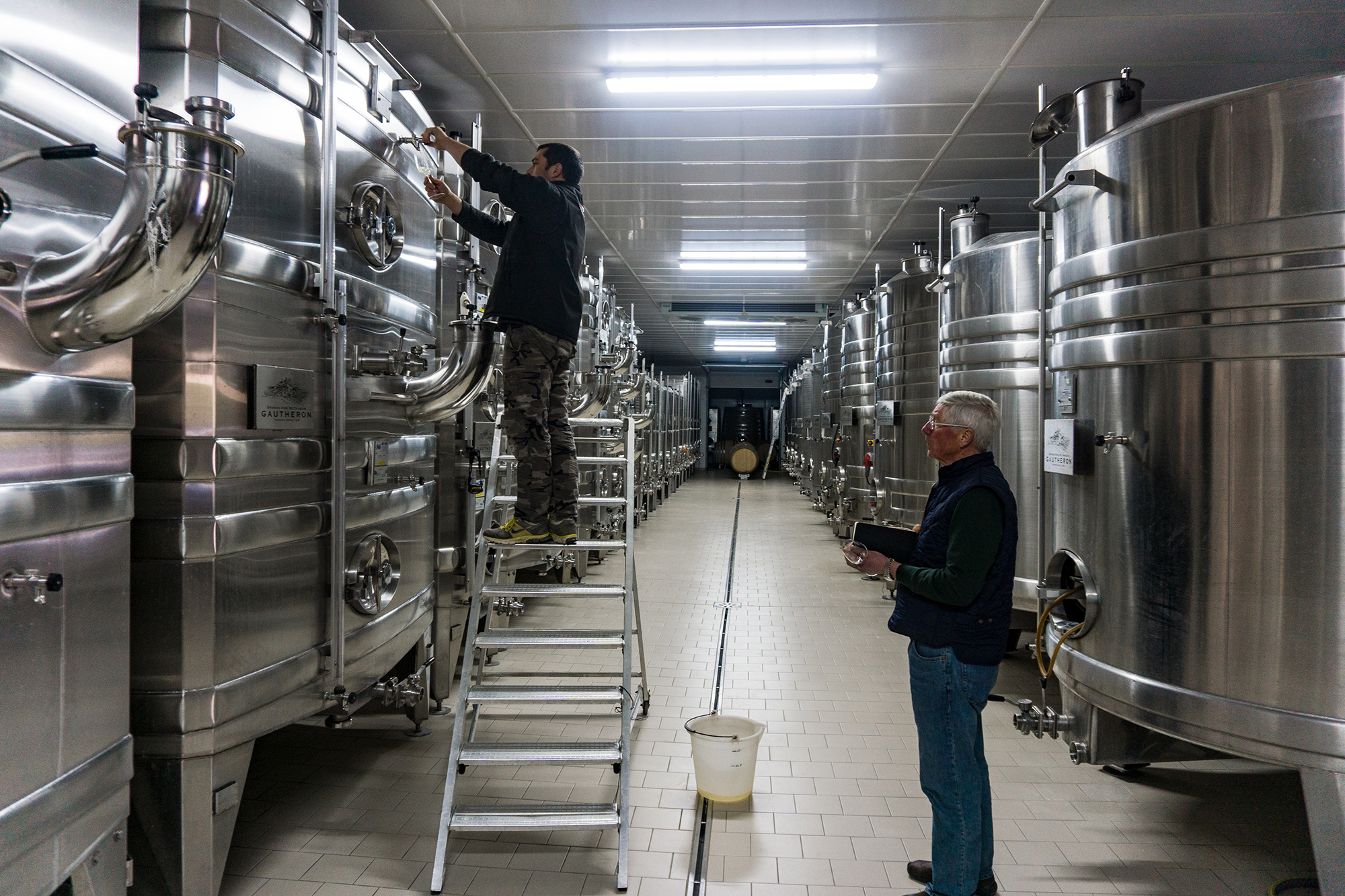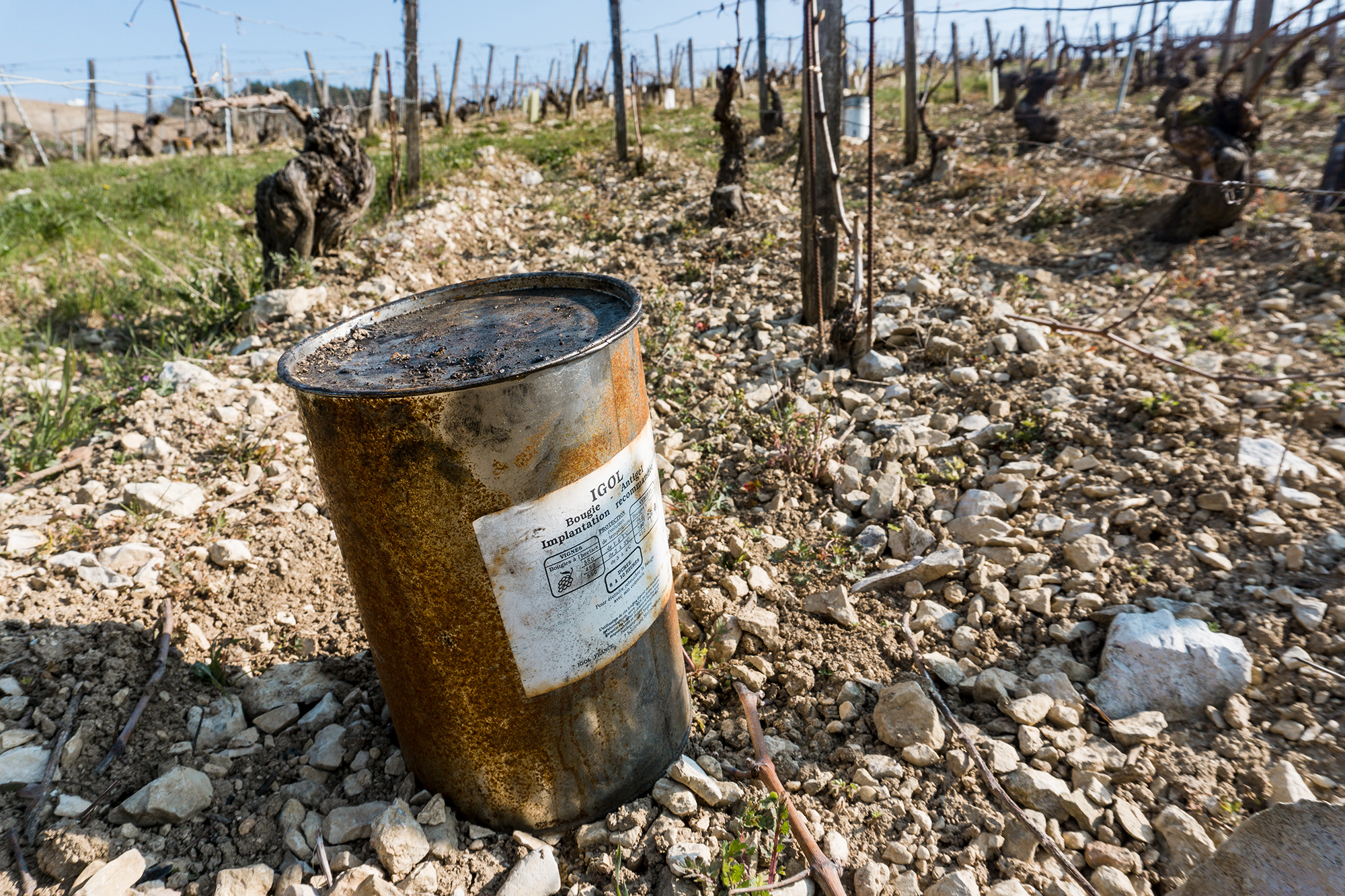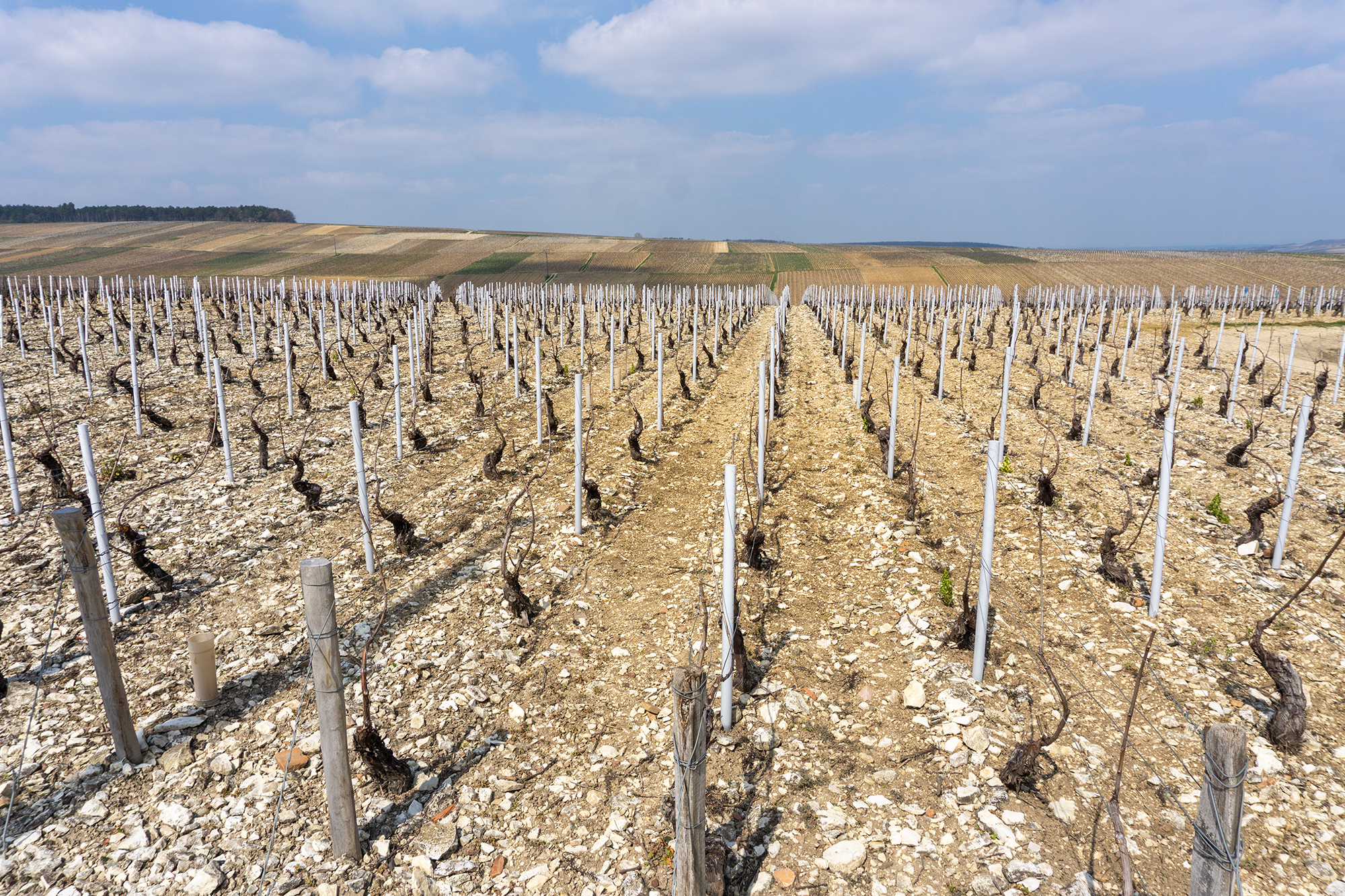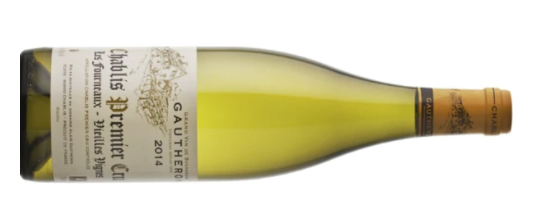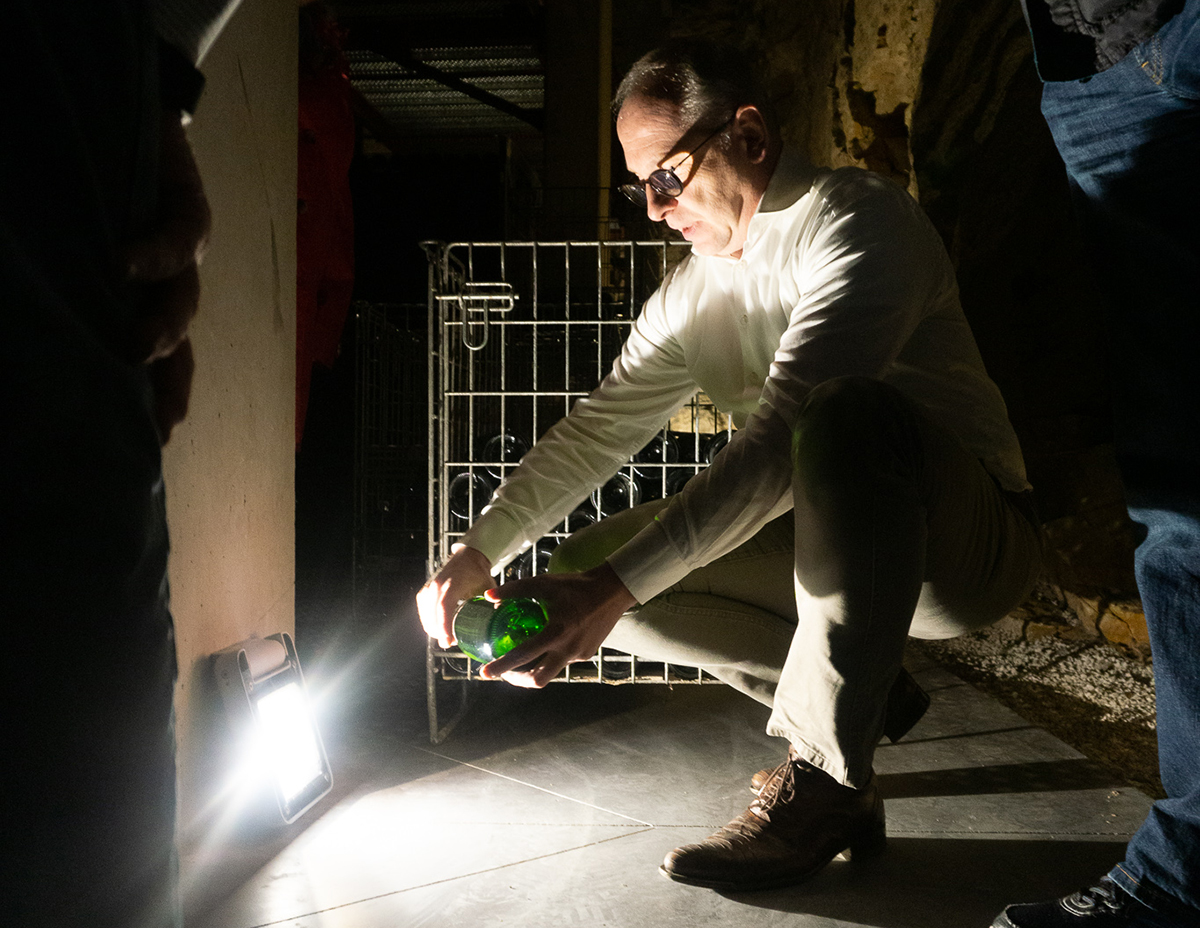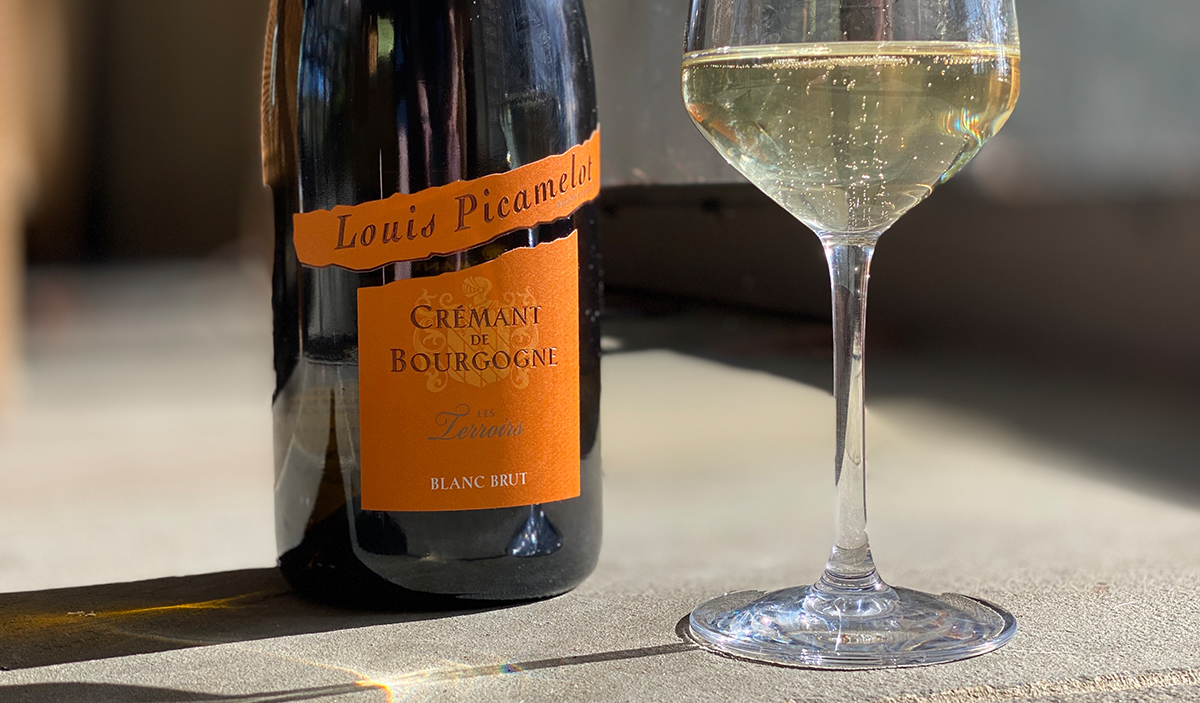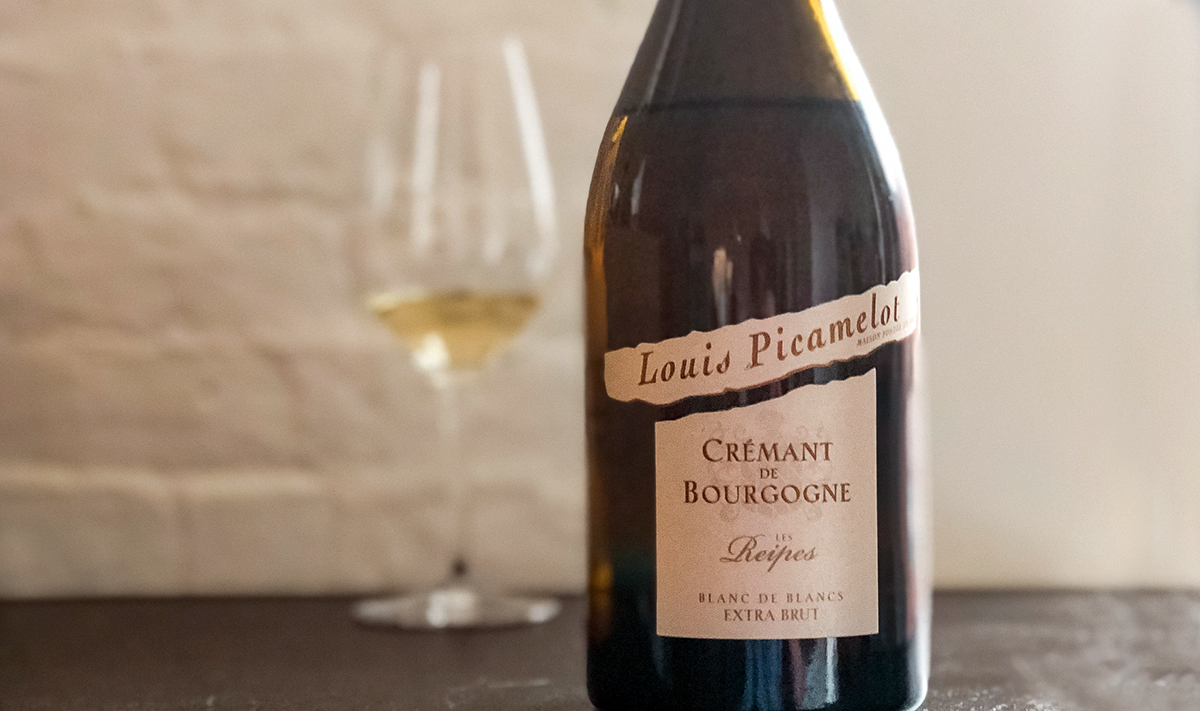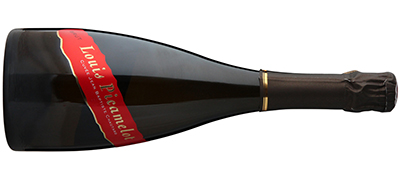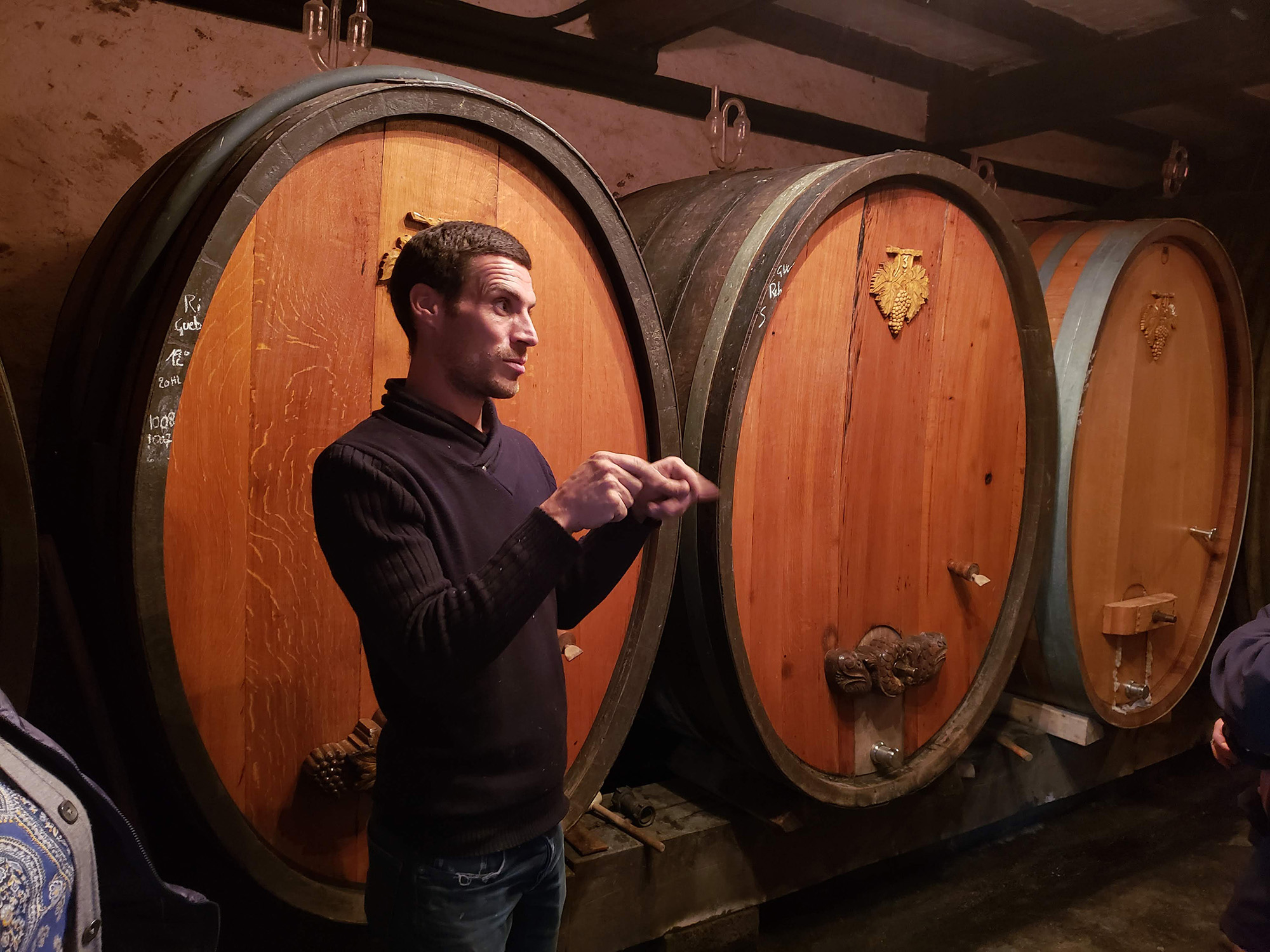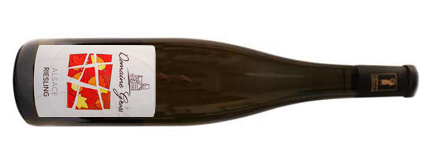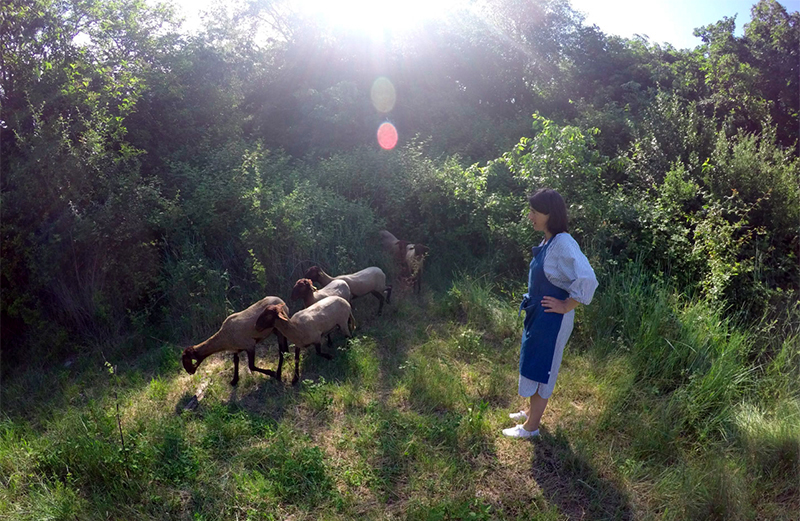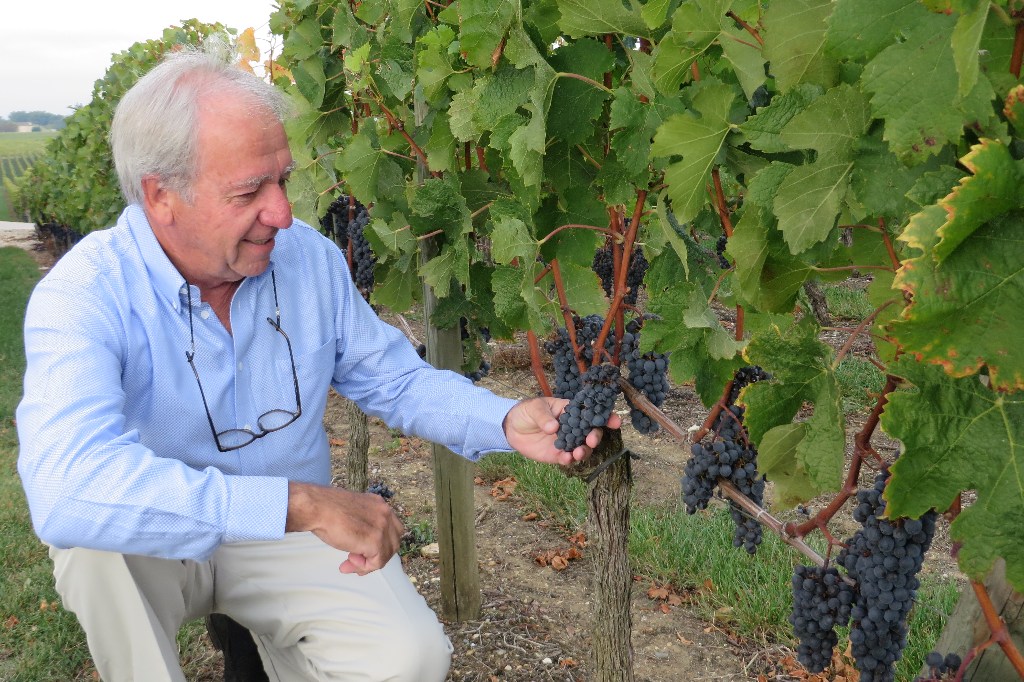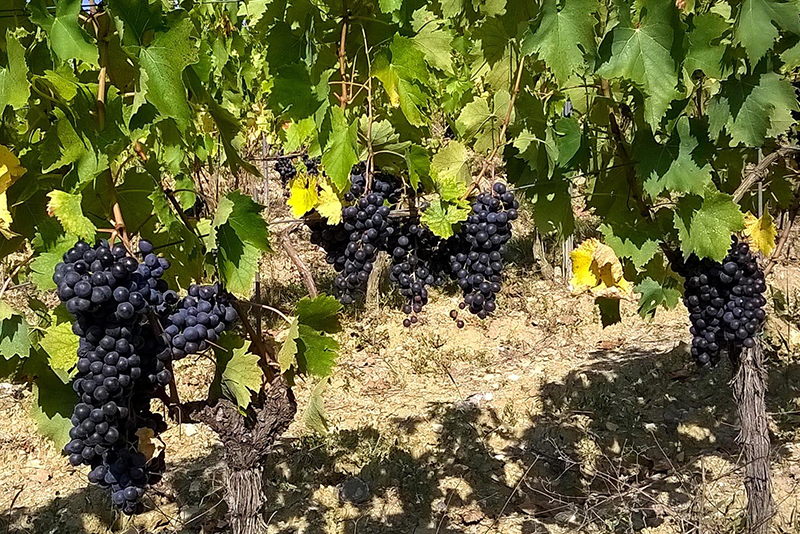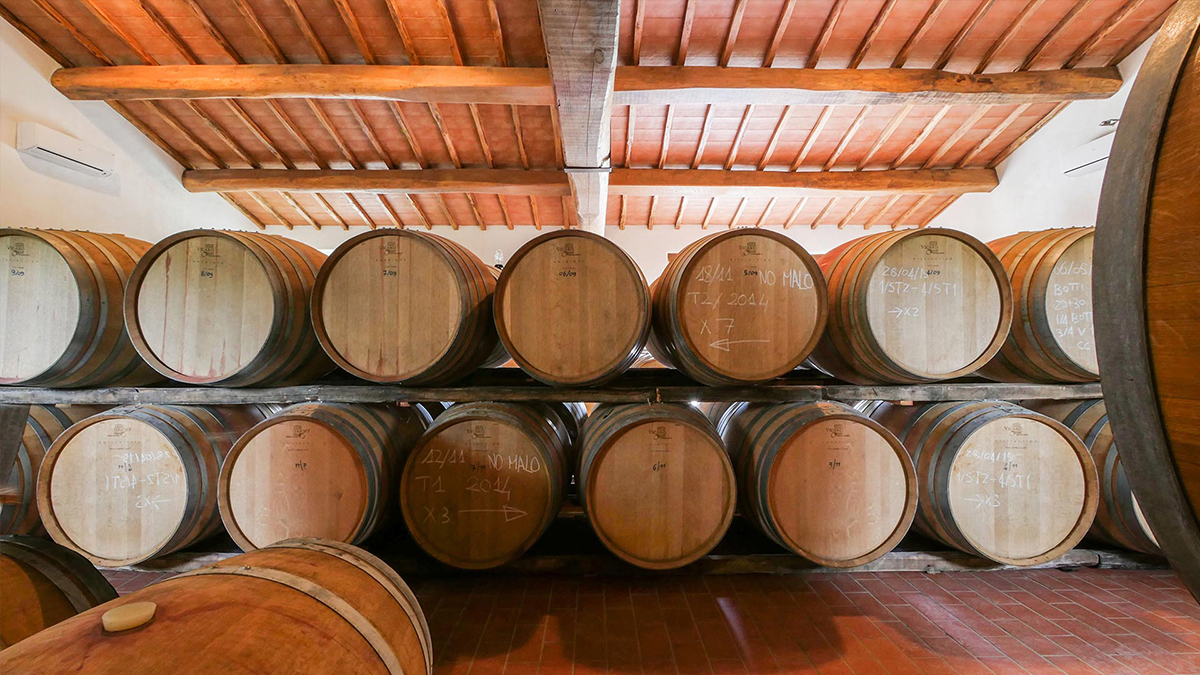The pandemic has forced all of us from well-trodden paths, requiring new approaches to work, to leisure, and to dining. While some of the effects are annoying and worse, others have inspired innovation. Something similar has been going on in France’s vineyards, where the vignerons have dealt with a string of unusually hot growing seasons and face the prospect of many more. For some time now, we have watched thoughtful producers adjusting their growing and harvesting techniques, such as changes in vine pruning to form canopies that give more shade, or harvesting at new times of day and bringing in the grapes with refrigerated trucks. Now many of them see evidence that the vines themselves are dealing with the changes in climate, including the owner of Romanée-Conti, who says he is “convinced that the vines are adapting to warmer, drier years.” And there is other good news with the bad as well: the perennial Burgundian problem of achieving ripeness has simply disappeared in recent vintages. Though we have missed the convivial moments in person with our regular producers, we have been able to get samples and assess their wines here. We are excited by the wines on offer in January Futures, particularly the Burgundies from 2018 and 2019. We have delicious whites to suggest from the Côte de Beaune and from Chablis, as well as big reds from Gevrey-Chambertin. And in the Côte Chalonnaise, we head to the Maison PIcamelot for their excellent Crémant de Bourgogne. There are also wines from the Alsace, from the two best corners of the Languedoc, and from Bordeaux’s right bank. Finally, it is time for our annual importation from Poggerino in Tuscany, whose wines continue to stand out. If you find anything of interest, be sure to get your orders in by the Order Deadline of January 31. We will place orders for the wine immediately thereafter. JUMP TO SECTION
Thomas
Varoilles
Gautheron
Picamelot
Gross
Foulaquier
Bagatelle
Dauriac
Poggerino
January Futures
Order Deadline: 1/31
Domaine Gérard Thomas
St-Aubin, Burgundy
We have been buying white Burgundy from the Domaine Gerard Thomas for two decades now, having come upon their “Murgers des Dents de Chien” in George Blanc’s Brasserie along the Saone in downtown Macon during our first wanderings in the region. The wine list at that chef’s three-star eponymous restaurant in Vonnas is filled with the wines of Meursault, Puligny, and Chassagne; but his Macon Brasserie was built to cater to the French national pastime of Sunday lunch rather than the grand celebrations that accompany important anniversaries and business deals. At the brasserie, the wines were chosen to complement a perfectly roasted poulet fermier served with pan juices rather than squab on a purée of foie gras. Well-made wines with a less exalted pedigree were the order of the day. When we started buying from Gerard Thomas most writers saw St Aubin as a sideshow to the celebrated white Burgundy towns of the Côte de Beaune. Though many of its vineyards are as close to the Montrachet Grand Cru complex as those of Puligny and Chassagne, most are up a side valley and literally just out of sight. Whether it’s a changing climate or merely recognition of what has been there all along, today’s writers put St. Aubin at a comparable quality level; yet the wines remain more affordable.
The Thomas 2019 Bourgogne is ripe and round, with a depth and density usually seen in village appellations. The oak is noticeably toasty here — an integral part of the domaine’s style — and the fruit blends nicely with the roasted vanilla notes that come from the barrels. (Next to a New World Chardonnay, this might seem barely oaked; on a Burgundy spectrum it’s more noteworthy.) It is the wine’s freshness that distinguishes it from the Chardonnays of other places, and despite the heat in 2019 the wines all carry a fine level of energy. The St. Aubin “Champ Tirant” 2019 is a definite step up in sophistication and elegance. The nose of the 2019 is delightful, with subtle notes of clove and spice, a lovely complement to the ripe citrus fruit in the mouth. It persists on the palate longer than does the Bourgogne, and the overall impression is one of finesse more than punch. Julia Harding MW called it “generous and creamy.”
“Murgers des Dents de Chien,” the St. Aubin 1er cru named for “walls of dogs’ teeth,” is the wine that sent us off looking for the domaine all those many years ago. Although we expect the 2019 to take on weight and complexity over the next year, it is nonetheless delicious today. It offers both more intensity than the Champ Tirant and that rich sweetness the French call “sucrosité” (though the wine is technically dry).
If your taste runs to more famous real estate, consider the Domaine’s Puligny-Montrachet 1er cru “La Garenne.” In fact Garenne borders Murgers on the north, but despite the proximity it is very “Puligny.” By that we mean that the wine is even more about elegance than power — some of the “fat” that in Murgers recalls Chassagne is traded in for a lean and racy wine that needs a bit more time to show its elegant best. A customer last week recounted enjoying his last bottle of 2014 over the holidays — 6 years of patience isn’t required, but will be handsomely rewarded.
Domaine des Varoilles
Gevrey-Chambertin, Burgundy
Gevrey-Chambertin is the big dog of the Côte de Nuits. It not only has the most surface area, Gevrey boasts nine of the twenty-four Côte de Nuits Grand Crus and produces its most powerful, most full-bodied red wines. The Domaine des Varoilles has an embarrassment of riches in this important neighborhood: healthy-sized parcels in the Grand Crus Charmes-Chambertin and Mazoyeres-Chambertin; two premier cru monopoles, one of them enormous (the Clos des Varoilles and La Romanée); a fine parcel in a third premier cru; and two village level monopoles (the Clos du Couvent and the Clos du Meix des Ouches). In addition, the Domaine recently introduced a Bourgogne.
The 2018 vintage was one of the hottest on record, yielding rich, ripe wines across the board at this Domaine, and that means attractive opportunities across the price range. We can’t be precise about the 2018 Bourgogne — in these Covid-afflicted days we brought in and assessed samples of all the wines we are presenting; but somehow the Bourgogne sample from Varoilles went missing before it got here. We expect, though, that it will be comparable to the Domaine’s hugely popular 2017 Bourgogne. Allen Meadows (“Burghound”) has argued that in hot and dry vintages such as these, quality is less driven than usual by the appellation hierarchy; and that in 2018 there are excellent examples in the regional appellations. Though he didn’t taste the Varoilles Bourgogne, we think there’s little risk in buying some if you were a fan of the 2017s. At the village level, the Gevrey-Chambertin Clos du Meix des Ouches is particularly nice this year — its ripe dark fruit imparts a certain sweetness, and while it is showing its structure at the moment, we expect it to round out and begin drinking well before long. Burghound praised its “ripe and pretty aromas … composed by notes of plum, red currant, raspberry and discreet earth influences.” We think this has near-premier-cru intensity in 2018.
The Gevrey-Chambertin 1er cru “Champonnet” is usually a wine we bypass for the La Romanée and Varoilles, but in 2018 it is a varsity player, every inch a premier cru. The nose would remind you of the Meix des Ouches, which is just across the road at the edge of the village’s houses: the clear oak notes mingle with the dark blackcurrant fruit. But its pedigree shows through in the mouth: there’s plenty of substance and really good balance to boot. Look for notes of cassis, gingerbread and an enticing, suave texture. This Champonnet offers more finesse and elegance than the Meix, and for a premier cru it is surprisingly expressive right now. We loved its fine, lingering finish. The premier cru Gevrey Monopole “La Romanée” (see photo below, at right) is a study in minerality, on thin soil and right next to the Clos des Varoilles. The 2018 is a big La Romanée, more mouthfilling than usual, and with more material. But it retains its essential character, and in the long run 2018 might be a special vintage indeed there. It is still atypical for Gevrey, with more minerals and more tension than in most. We found healthy doses of fruit and minerals in the mouth, with the fruit out front at the moment. We think that eventually the fruit will recede in favor of its essential mineral character. There is refinement in abundance in this wine.
As usual, the Gevrey 1er Clos des Varoilles (photo above, at left) is bigger and richer than La Romanée, but perhaps by a smaller degree than in most years. The blend of sweet fruit and oak recall a big time Pomerol in the mouth, though the essential character is of course Burgundian. Burghound found “notes of poached plum, black cherry jam, and subtle hints of spice, warm earth and the sauvage.” In fact, the 2018 is closer to a Grand Cru than usual in intensity and sheer size. If classic Gevrey is your prefered expression, the Meix des Ouches, Champonnet, and Clos des Varoilles are all of a piece — each richer and more intense than the previous. The La Romanée offers something a bit different — we’re always fans of this cuvée, but it’s perhaps pas classique.
Finally, the Grand Cru Charmes-Chambertin 2018 is unquestionably Grand Cru. Its surprisingly expressive nose offers a pleasant mix of fruit and wood. It is rich and smooth in the mouth, with oodles of material. The flavors linger on the palate impressively. This wine will require some time at the back of the cellar, but when it begins to show itself clearly it should be impressive indeed.
Domaine Gautheron
Fleys, Chablis, Burgundy
Chablis offers Burgundy’s best white wine value. At every level, from village to Grand Cru, it can be bought for far less than its celebrated cousins from the Côte d’Or; but quality is very much in the same class. We work with two fine producers there, and this Futures offering features the wine of the Domaine Gautheron, a maker of classic Chablis. As the climate in the whole of Burgundy warms, its northern outpost has begun to yield rounder, more full-bodied wine. This has led more and more Chablis producers to raise some wine in oak barrels, and it is now common to see wines there that bear a close resemblance to those of the Côte d’Or. The classic Chablis formulation is to raise wine with little or no oak: this makes wines that show clean, pure, Chardonnay fruit mixed with a stony minerality. The Domaine Gautheron hews mostly to this classic style. Cyril Gautheron’s main focus is on showing his terroir clearly. When he uses barrels for elevage, he does so with a light touch.
The wine press has found much to like in the 2019 vintage. Like its immediate predecessors, the 2019 growing season was very hot in Chablis, but heat is not the only factor affecting the overall quality of a vintage. In contrast to 2018, it was dry and very sunny as well as hot, and the flowering unfolded in a way that cut yields to something like half those of 2018. Furthermore, for reasons still up for debate, the heat did not result in unusually high sugar (and therefore alcohol) levels. The wines are fresh, concentrated and lovely. The Domaine’s 2019s are excellent at all levels. Many readers buy the Petit Chablis each year. It’s a straightforward, pleasant wine that features clean lemon fruit, making for particularly nice summertime sipping. Despite its impressive freshness, the 2019 vintage also has more body than usual, making it a particularly attractive wine this year. We found this wine unusually good, and at a price under $20 it’s as good as entry level white Burgundy gets.
At the village level we suggest the Chablis Vieilles Vignes, which comes from 60 to 65 year old vines in the same neighborhood as the premier cru Vaucoupin. Though Cyril uses some oak in the early part of this wine’s elevage, it comes across as just a whisper, with the pure, shimmering fruit occupying center stage. The wine’s solid core and excellent density support its fruit very well. (Since moving to the coast of Maine with its bounty of fresh seafood, Wilcox père finds himself reaching for this wine with great regularity.) Look for more floral notes here, as well as more distilled intensity from the old vine fruit. Our usual offering at the premier cru level is the vat-raised Chablis premier cru “Vaucoupin.” We thought it excellent as usual in the 2019 vintage, and we offer it here for its regular buyers. The 2019 offers a really excellent blend of fruit, freshness, savory herbs and minerality — it’s every bit a premier cru. (This wine disappears from our cellars so quickly we rarely get to see it age, but it cellars beautifully for 2-3 years.)
Our Gautheron lineup usually ends there, but we were particularly taken with Gautheron’s 2019s from “Les Fourneaux,” a premier cru vineyard that lies just below the winery in the hamlet of Fleys. There are two versions of this wine, a regular cuvée that is entirely vat-raised, and an old-vine cuvée with a slight touch of oak. We loved them both. Jasper Morris MW (author of “Inside Burgundy”) praised the Fourneaux’s “bundle of energy” and its “clean but powerful and zesty bouquet.” We were particularly impressed by its finesse. It’s a drier cuvée — intensely stony and savory. If it shows a beat less exuberance than Vaucoupin, it makes up for it in polish.
The “Fourneaux Vieilles Vignes” comes from 70 year-old vines and sees just a bit of oak. This wine opens a bit smoother than the regular cuvée and shows extraordinary balance across the palate. It’s more complex aromatically and particularly refined. Look for notes of chalk, dried melon, and oyster shells — there’s noticeable length, suggesting this will age beautifully for 4-5 years.
Maison Picamelot
Rully, Burgundy
Most Americans limit their sparkling wine consumption to holidays and celebrations. The price of Champagne makes it hard to justify on a random week night, and difficulty in re-corking means many wait for a crowd to finish the bottle. But sparkling wine is ageworthy, versatile, and remarkably food-friendly — restricting your bubbles intake to Christmas and weddings means missing out on a world of good wine. The solution? A $10 stopper, and Crémant de Bourgogne.
Good Crémant de Bourgogne in particular offers an attractive relationship between price and quality. Our source for that is in the Côte Chalonnaise: Rully’s Maison Louis Picamelot. The Wine Advocate’s William Kelley writes that Picamelot “produces some of the best sparkling wines in Burgundy,” and “makes a persuasive case for taking the genre more seriously.” Philippe Chautard, the grandson of the founder, has taken the enterprise to a new level, transforming an old quarry on the edge of the town to a large underground cellar. This lets him give his crémants time in the bottle to develop their full complexity. It’s hard to pick a favorite here, so we’re suggesting five cuvées.
First their Crémant Brut “Terroirs” NV. A blend of Chardonnay, Pinot Noir and Aligoté, this cuvée represents Burgundy as a region, drawing from grapes in the Côte d’Or, Côte Chalonnaise, and Maconnais. In the glass it’s smooth and drinkable, with fine bubbles and notes of apple skin and sweet butter. At barely over $16/bot it’s a striking value — treat it like a crisp white wine and serve it as often as you like. Pair with Bourdain’s unfussy Mac and Cheese. For a more colorful version, consider Picamelot’s Brut Rosé NV. This dry, refreshing cuvée is 100% pinot noir — it’s more floral and fruit-forward than the Terroirs, but no less delicious. It sports a bit more polish than the Terroirs, and it’s a splash more fun in the glass. Serve with sushi.
One level up, Picamelot makes two excellent cuvées with real class and depth — one a blanc de noirs (all Pinot), and the other a blanc de blancs (all Chardonnay). Both spend over 3 years on the lees, which would qualify them as vintage Champagne if grown there. The Pinot, called “En Chazot,” is chewy and full, with excellent complexity and texture. It comes from a single plot near Saint-Aubin and is a terroir-driven Extra Brut cuvée. Look for an expert blend of earth and fruit, with notes of spice and fresh citrus. “Les Reipes” is also from a single plot near Saint-Aubin, but is pure Chardonnay. It’s also Extra Brut, and is more refined and subtle than En Chazot. Look for yellow orchard fruit in the nose, with toasty notes of brioche, chalk, and butter cookies in the mouth. Serve this with an elegant dish of fish.
Picamelot’s finest wine is their “Cuvée Jean Baptiste Chautard.” This blend of Aligoté and Chardonnay is terrific, and we think rivals many a mass-market Champagne at twice the price. The current release is the 2015, which has been on lees for nearly five years — a duration unheard of outside of Champagne. It’s partially barrel fermented, adding a bit of weight and complexity to the juice. The nose shows pear and apricot, with notes of rising dough and (still) white Burgundy. The mouth is long and very tense, with an elegant blend of energy, richness and depth. With a Futures price of $27/bot, this is a no brainer — we love both of our grower Champagne producers, but on quality-price ratio, this cuvée is an undisputed winner.
Domaine Gross
Guberschwir, Alsace
The Domaine Gross is our new producer from the Alsace. Though the domaine is generations old, Vincent Gross of the latest generation has brought it to the cutting edge of modern winemaking. They farm organically, follow the principles of biodynamics, and have recently added “orange” wines to their lineup. Their most popular wine is traditionally made, and their regular cuvée of Riesling is just delicious in the 2019 vintage. The nose shows pure and lovely yellow orchard fruit — white peaches and perhaps a touch of apple, but a fuji apple rather than a tart one. In the mouth it opens dry, lively and fresh, then rounds into a much more mouthfilling presence. This is a wine that will enhance a wide variety of meals, particularly Asian cuisine or any sort of stir fry. We love to drink it with David Tanis’s Fragrant Thai-style Clams in Coconut Broth, but there’s no reason to confine it to specialties — it makes a fine match for a simply broiled piece of haddock, or just cheese and crackers on a weeknight.
Our other idea in Riesling is the 2015 Riesling “Steinberg.” This offers a classic Riesling nose with just a touch of petrol. The fruit is ripe peaches, and the wine has a lovely roundness. Its six grams per liter of residual sugar give it a certain tenderness, though the wine is hardly sweet. (The terms “sec-tendre” and “off-dry” were coined to describe wines such as this.) Though fully mature and recommended for drinking over the next year or two, it has plenty of supporting acidity and no hint of tiredness. Enjoy this generous Riesling all by itself as an apéritif, or maybe accompanied by Tuna Tartare. If you are a fan of dry Muscat, consider this one from the Grand Cru Goldert in 2016. The grapes were pressed very slowly, allowing for intense extraction from the extended skin contact. Muscat has a unique aromatic profile, but the nose of this wine is particularly complex, with ripe muscat fruit mingling with a definite mineral line. This wine is as dry as the 2019 Riesling, and the mouth is nicely fresh. There should be no rush to drink this one — the domaine projects a drinking window through 2036. It will be a beautiful match for shellfish, particularly butter-seared scallops or a steamed lobster. Or with something spicy — a Thai curry or Indian Masala.
Finally, the domaine’s Pinot Noir “R” 2018 is an easy to drink, pleasant expression of the grape. It’s bottled without sulfites, so we wouldn’t recommend aging it for a long time, but for drinking over the next few years, it’s an excellent value. The nose has a pleasant dustiness mixed in with the violets and wild cherry fruit aromas, and it will go well with a variety of Burgundy-friendly dishes. Start with a roast chicken and work your way from there.
Mas Foulaquier
Pic-St-Loup, Languedoc
The Mas Foulaquier was our original source for “natural” wines, and the more we taste through the genre, the more we appreciate Foulaquier’s style. These are rugged, sometimes funky wines, to be sure, but they exhibit complexity and completeness. Where other natural wines offer a single, interesting, unusual note, Foulaquier’s wines present a natural symphony — maybe Philip Glass more than Beethoven, but charming nonetheless. Located at the northern end of the sprawling Languedoc, winemakers Pierre Jéquier and Blandine Chauchat craft blends of Syrah, Grenache and Carignan that perfectly reflect their untamed, rugged landscape. Year in and year out, they manage to find balance and finesse in their warm region. We have three suggestions — all new vintages of longtime favorite cuvées.
As always, the Orphée 2018 is an excellent entree to the lineup, a 50/50 Grenache-Syrah blend. The nose is dark and woodsy, combining wild berries, lavender, and sous-bois. The mouth shows black fruits and black licorice, with a juicy texture and serious finish. The 2018 is slightly bolder and more substantial than usual — we always enjoy this cuvée young, but are excited to see this one age too.
The 2017 Calades is a marriage of ruggedness and finesse. It’s young and inky, with a broad mouthfeel and fine, pretty tannins. The blend is 80/20 Syrah-Grenache, so the fruits are blue and peppery, with notes of violets, earth and spice. This should improve for 3-5 years, but with roast lamb and a decanter we think it’ll be delicious when it arrives in the spring.
Finally, our favorite from Foulaquier, the Gran’Tonillieres. It’s pure carignan from 60-year-old vines, aged half in amphora and half in barrels. The 2017 shows just how good Foualquier can be. The nose is clean and exquisite, showing gorgeous crushed strawberries and thyme. The mouth is at once dainty and dense, elegant and rugged — a combination we’ve only found to this degree chez Foulaquier. Serve on a springtime evening with a Middle Eastern salad.
Clos Bagatelle
Saint-Chinian, Languedoc
The Languedoc is an enormous winegrowing region that stretches across the south of France. Its reputation is low because most of its wine is grown industrially on the flat, hot plain that takes up most of its territory. But there is fine terroir along the northern edges of the Languedoc, where increasing elevations change the ripening equation and hills add soils that are excellent for winegrowing. We find our way into these best parts of the region at two places: Pic St. Loup at the eastern end, and St. Chinian farther west. The Clos Bagatelle is a family winery whose wines showcase the excellent terroir in the hills around St. Chinian. We sometimes suggest two or three wines for your consideration, but this year one wine seemed the clear choice: the barrel-raised Au Fil de Soi 2018, a blend of Syrah (35%), Grenache (30%), Mourvedre (20%) and Carignan (15%). This is a rich red wine with plenty of ripe fruit accompanied by pleasant mineral notes. It should drink well from the time it arrives, and to continue to please for perhaps five years.
The Clos Bagatelle rarely has visitors from the wine press, but the Wine Advocate’s Joe Czerwinski had much praise for the 2017 vintage of this wine, finding “scents of crushed stone, violets, licorice and mixed berries.” He awarded it 91 points, calling it “supple and delicious,” with “silky tannins.” In our view the 2018 is comparable, and if anything offers a deeper, more floral profile. As always, we find this wine an excellent value. Serve it with a pot roast accompanied by winter vegetables and it will warm up your Sunday afternoon.
Vignobles Dauriac
St-Emilion, Bordeaux
St. Emilion and Pomerol are the leading appellations on Bordeaux’s right bank, and our producer Christian Dauriac has excellent properties in both of them. St. Emilion’s Chateau Destieux is his flagship wine, and during Dauriac’s ownership it has been elevated from Grand Cru to Grand Cru Classé. (Classifications on the Right Bank are the reverse of Burgundy; “Grand Cru” is actually a lesser appellation than the rarely awarded “Grand Cru Classé”).
Destieux is always a big, rich wine, and it always needs some time in the bottle to drink really well. We found the 2017 attractive, but both 2016 and 2015 remain available at the Chateau; and after comparing our notes and experience with the earlier vintages we suggest you elect to take one or the other of them and gain an extra year or two in the Chateau’s cellar. Vinous’s Antonio Galloni awarded 92 points to the 2015, calling it “unctuous, deep, and super-concentrated,” and finding that “bittersweet chocolate, grilled herbs, plum, violet, new oak and spice are fused together in a texturally rich, sumptuous wine that hits all the right notes.” The 2016 has similar fruit with a little more freshness and a bit more of a mineral line. Galloni called it “a terrific showing” and found it “endowed with superb richness and tons of sheer appeal,” awarding 94 points. As should be clear from such high praise, you can’t go wrong with either vintage.
Christian Dauriac also owns the St. Emilion Grand Cru Château Montlisse, which produces an excellent, well-made St. Emilion at a much more modest price. We were particularly impressed with the 2017 vintage of Montlisse. Of course it’s not as powerful a wine as Destieux, but this vintage has a very attractive balance and is expressive enough today to promise much pleasure over the near term. Vinous’s Neil Martin praised its “intense, well-defined bouquet with brambly red fruit and light cedar and tobacco aromas.” He called it “a lush St. Emilion, very modern in style but with a gorgeous velvety texture that leaves you wanting more,” and awarded 92 points.
As rich and round as are these St. Emilions, Dauriac’s most sumptuous wines come from Chateau Clemence in Pomerol, which is home to the likes of Petrus and Le Pin. Pomerol is a tiny appellation whose deep clay soils are unique in the region, and Merlot dominates its wines. Château Clemence 2017 is opulent and silky. It is luxuriantly round in the mouth, with the intensity of Destieux but finer, softer tannins. Antonio Galloni called it a “lush, richly textured wine full of character and allure,” awarding 92 points. He found notes of “dark cherry, plum, spice, licorice and chocolate.” This Clemence can be enjoyed young, but cellaring should be rewarded with added complexity across the palate.
DAURIAC Destieux St-Emilion Grand Cru Classé 2016: $875 Destieux St-Emilion Grand Cru Classé 2016 (6x 1.5L): $875
(case prices)
Destieux St-Emilion Grand Cru Classé 2015: $875
Montlisse St-Emilion Grand Cru 2017: $395
Clemence Pomerol 2017: $995
Destieux St-Emilion Grand Cru Classé 2015 (6x 1.5L): $875
Fattoria Poggerino
Chianti, Italy
If it’s January, we must be going to Poggerino for Chianti. We learned about Poggerino in 2004, when a famous Tuscan winemaker whose wines we were tasting commented on Piero Lanza’s near-fanatical devotion to quality. We decided to stop by on our way through Radda, and we have been happily buying his wines ever since. In recent years, the wine world has caught onto what we long considered our secret. Antonio Galloni’s Vinous in particular has issued glowing reviews, and those for the wines on offer here are equally enthusiastic. Sangiovese, Chianti’s principal grape (whose name is loosely translated “Blood of Jove”), is finicky and hard to raise and ripen. Short of full maturity, its tannins can be raspy — so much so that traditionally producers added white grapes to the mix in an effort to round out the wine that made its way into those straw-covered bottles. Piero once showed us white grape vines grafted onto the trunks of a few of his oldest vines. But what he does so well is consistently to bring his grapes to full maturity, making beautiful wine that may well be the best in the appellation.
This year’s Chianti Classico is from the 2018 vintage, and showcases the possibilities of well-ripened Sangiovese. (Think hand-made pasta rather than a plate of spaghetti at the Olive Garden.) The nose offers dark cherry fruit with a pleasant dustiness. The ripe fruit carries seamlessly across the palate, which is pleasantly mouth filling — but neither hot nor flabby — and the tannins are fine-grained and attractive. This is beautifully made wine without pretense, and it is a remarkable value.
The Chianti Classico Riserva from the “Bugialla” vineyard is gorgeous again in 2017 (Riserva must be aged 24 months before release). Antonio Galloni, who called the 2016 Riserva “a total knockout,” called the 2017 “another stellar wine.” He found much freshness in its “freshly cut flowers and sweet, red berry fruit,” and identified notes of “rose petal, blood orange, and spice” lingering on the “racy, exquisite finish.” We’re confident this wine won’t disappoint, and that it will offer many years of drinking pleasure. (Just a year ago, we opened our last bottle of the first Poggerino Riserva we bought — from the 2001 vintage. It was magnificent: smooth, complex, and long). We will be getting a limited quantity of Magnums of both the Classico 2018 and the Riserva 2017. Nothing features a wine quite like opening a magnum at a dinner party. (Cases are six magnums; half cases are three).
This year for the first time in years, we are including Poggerino’s Rosato. Rosé is popular these days, and there are many excellent dry rosés available for warm weather drinking. Piero has tinkered with his Rosato over the years, and we think he has it just right. Like his other cuvées, it’s 100% Sangiovese. It’s dry on the palate, with a lively freshness; and its floral nose resolves into delightful strawberry fruit in the mouth. We will be bringing in the just-bottled 2020 with this importation, so the lively freshness should be guaranteed. When the weather begins to warm in the spring and early summer, it will be hard to beat this light, refreshing glass for a moment of relaxation at the end of the day.
POGGERINO Chianti Classico 2018: $250 Chianti Classico 2018 (6x 1.5L): $250
(case prices)
Chianti Classico Riserva “Bugiala” 2017: $395
Rosato 2020: $195
Chianti Classico Riserva “Bugiala” 2017 (6x 1.5L): $395
_____________________________ If you have any trouble submitting the new order form, you can always email us your order. Or give us a call with questions: 617-249-3657, or tom@ansoniawines.com The deadline to place orders for this issue is: SUNDAY, JANUARY 31. Questions? Need advice? Call us: (617) 249-3657. OPTIONS FOR GETTING YOUR ORDERS Pick-up in Pennsylvania. Many of those who aren’t near Boston will choose to collect their wine in Sharon Hill, PA. For such people, we offer pickup at a new storage location for a month after arrival. Shipping elsewhere. In most states we can arrange for shipping at an additional cost that varies by location ($3.50 per bottle to the addresses west of Chicago; $2.50 per bottle east of Chicago). If shipping interests you, let us know the state and we will figure out if it can be done.
Pick-up in Massachusetts. We store our inventory in a basement in Newton (437 Newtonville Ave), and open it up to the public on Saturday afternoons. Futures customers can pick up their orders here during Saturday open hours, or by appointment.





